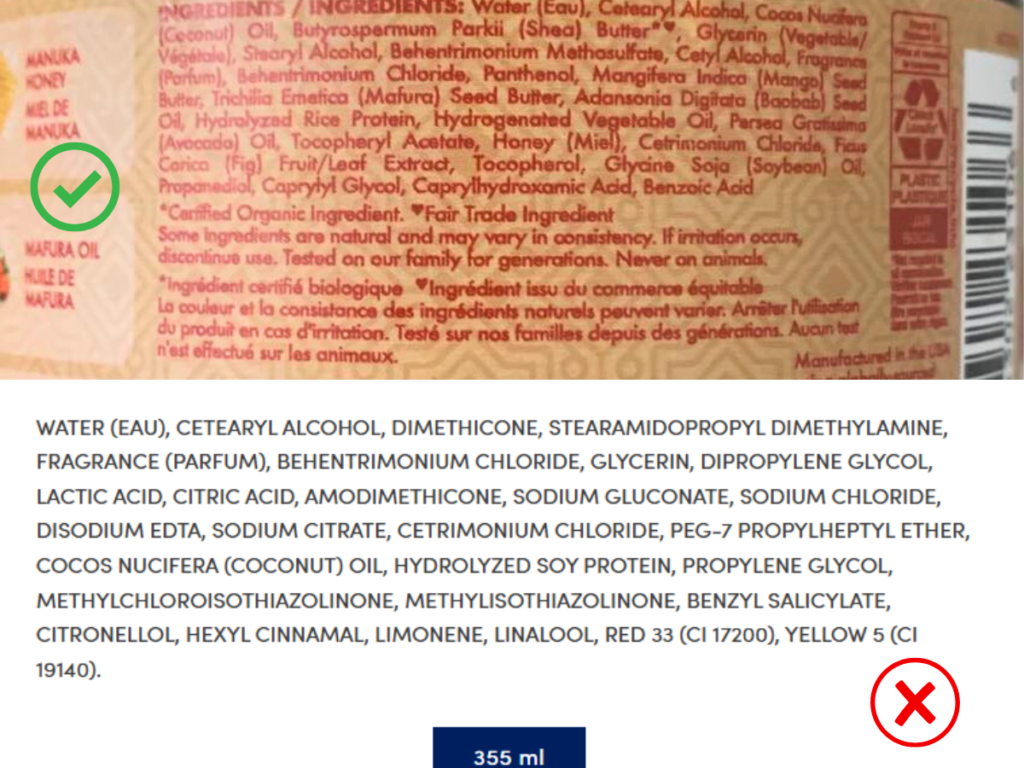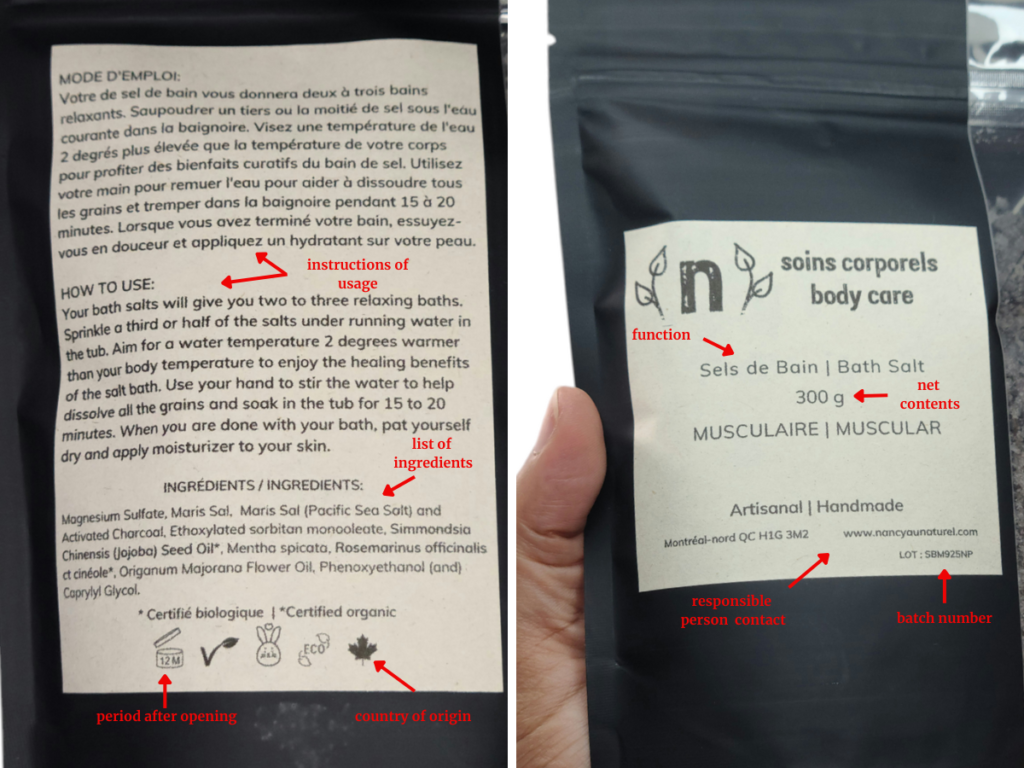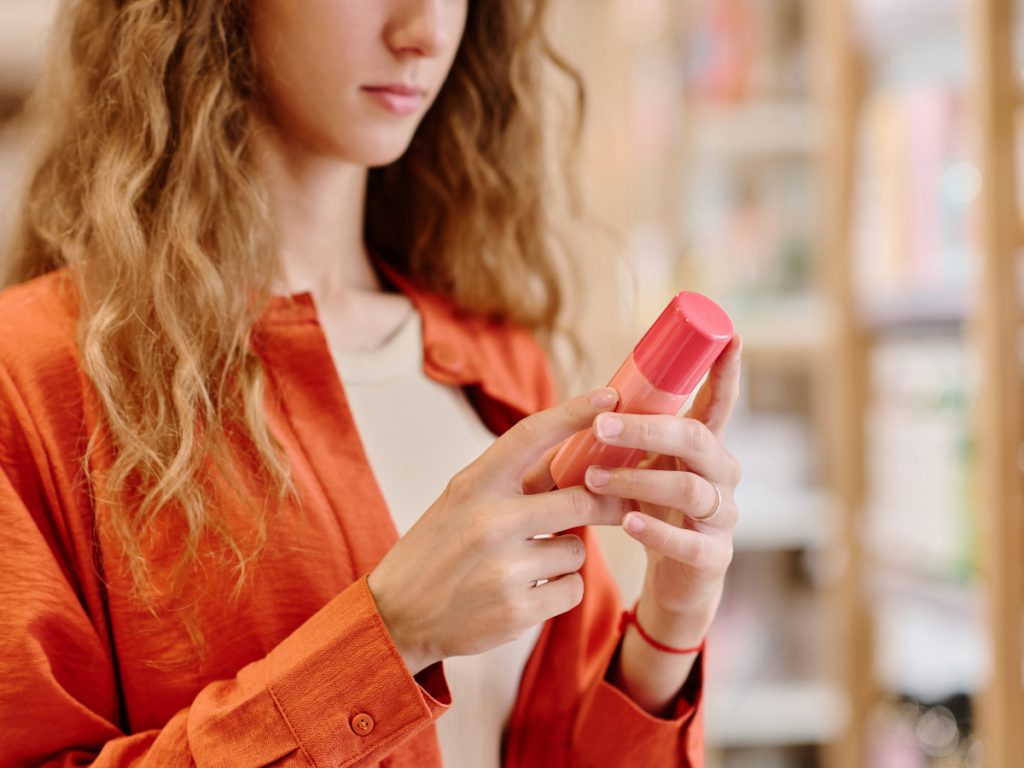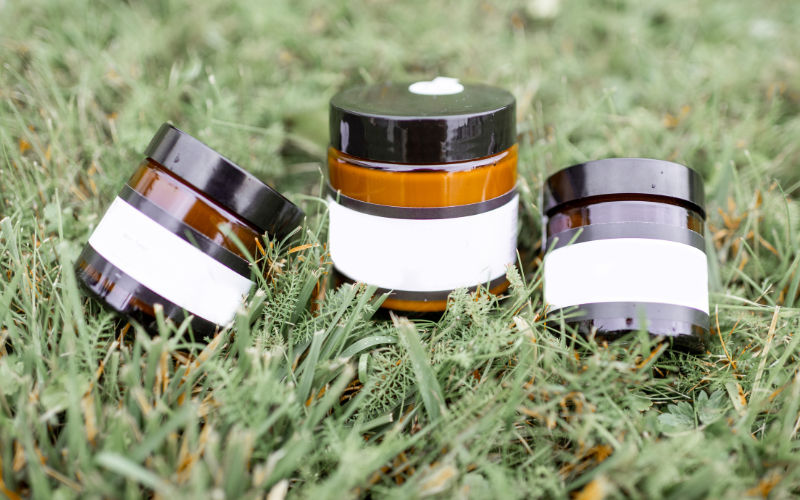Decoding Your Skincare Labels – A Guide to Clean Ingredients
Welcome to the second article in my 5-part series on Conscious Skincare. Last week, in “The Science of Skin Healing – Nature’s Way,” we explored how your skin naturally heals and regenerates itself. Today, we’ll dive deep into understanding ingredients and certifications.
The Sacred Art of Ingredient Transparency
Your skin tells your unique story, and you deserve to know exactly what you’re using to nurture it. When we choose products with clear, honest ingredients, we honor both our bodies and the Earth that provides these healing elements. This transparency builds trust and empowers your skincare journey.

Gentle Guidance: Ingredients to Mindfully Avoid
The David Suzuki Foundation, my trusted voice in environmental consciousness for over 30 years, has identified their “Dirty Dozen” toxic ingredients commonly found in personal care products. As a long-time supporter of their vital work, I’ve witnessed how this research has transformed the way we think about skincare safety.

Here are key ingredients to be mindful of:
- Parabens: These preservatives can disrupt your body’s natural harmony.
- Hidden fragrances: Your skin deserves authentic, pure scents from nature.
- BHA and BHT: Synthetic preservatives highlighted in the Dirty Dozen.
- Formaldehyde-releasing preservatives: There are gentler ways to preserve.
- Synthetic additives: Nature provides all we need for radiant skin.
- DEA-related ingredients: Another crucial element to avoid from the Dirty Dozen list.
Understanding Nature’s Seal of Trust
As a 2020 Formula Botanica graduate, my organic skincare formulation training opened my eyes to the importance of global organic standards. This comprehensive education inspired my commitment to following stringent EU regulations, ensuring your products meet some of the world’s highest safety standards. When exploring conscious skincare, look for these trusted certifications:
- Canada Organic/Biologique Canada: A promise of 95% organic ingredients.
- ECOCERT Canada: Our Quebec community’s trusted standard.
- Quebec Vrai: Supporting our local organic artisans.
- COSMOS: The gold standard in European organic cosmetics, requiring thorough documentation of every ingredient’s journey from soil to skin.
- CertClean: Canada’s leading certification for clean beauty.
- EU Organic: Known for having some of the strictest regulations globally for cosmetic safety.
Following EU cosmetic regulations means your products are formulated with:
- Clear restrictions on over 1,300 ingredients.
- Strict preservation systems guidelines.
- Comprehensive stability testing requirements.
- Full ingredient traceability.

Organic certifications vary by region. Thanks to online shopping, here are other organizations that are good to know:
- USDA Organic: Requires 95% organic ingredients.
- NSF/ANSI 305: Specific to personal care products.
- Australia Certified Organic (ACO): Strict standards for both ingredients and processing
What to Look for in Brand Sourcing Practices
Understanding a brand’s sourcing practices isn’t just about quality—it’s about connecting with the very essence of what you’re putting on your skin. When a brand is transparent about their sourcing, it reveals their commitment to both your wellbeing and our planet’s health.
Think of sourcing like tracing the roots of a tree. The deeper and stronger these roots, the more nourishing and trustworthy the fruits. Here’s what mindful brands should demonstrate:
- Transparent supply chain documentation: Know where your ingredients begin their journey.
- Direct relationships with ingredient suppliers: Ensuring quality from source to skin.
- Regular third-party testing reports: Verification that builds trust.
- Clear batch tracking systems: Every product tells its story.
- Published sustainability commitments: Actions speak louder than words.
- Fairtrade certifications: Supporting ethical practices globally.
- Local sourcing initiatives: Reducing environmental impact while supporting the community.
- Seasonal ingredient adaptation: Working in harmony with nature’s cycles.
- Waste reduction programs: Honoring our Earth at every step.
Want to learn more about my commitment to ethical sourcing? Read my full sustainability policy here.
Reading Labels with Wisdom
Understanding skincare labels empowers you to make choices that align with your skin’s needs and your values. Think of it as learning a new language—one that helps you communicate directly with your products and their potential benefits.
Here’s your mindful guide to label reading:
1. The Order Matters
- Ingredients are listed from highest to lowest concentration.
- The first 5 ingredients typically make up about 80% of the product.
- Water (aqua) is often first in liquid products.
2. Know the Language
- Natural ingredients often have their common name followed by their Latin name in parentheses.
- Example: Lavender Oil (Lavandula Angustifolia).
- Different names might refer to the same ingredient (like Vitamin C can be listed as Ascorbic Acid).
3. Look for Clear Communication
- Transparent brands list percentages of key active ingredients.
- Preservation systems should be clearly stated in water-based products.
- Manufacturing and expiration dates should be easily found.

4. Watch for Hidden Elements
- “Fragrance” or “Parfum” can legally hide numerous ingredients.
- Terms like “natural” aren’t regulated.
- Organic” claims need certification backing.
5. Safety Information
- PAO (Period After Opening) symbol shows how long the product remains safe.
- Storage requirements indicate proper care.
- Allergen declarations protect sensitive skin.
By understanding these elements, you’re better equipped to choose products that truly serve your skin’s journey to radiance.
Create Your Own Natural Skincare Ingredient Checklist
Knowledge is empowering, and creating your own ingredient checklist helps you become more intentional with your skincare choices. This practice deepens your understanding of what nurtures your unique skin and helps you make conscious decisions that align with your values.
Essential Elements to Document:
- Main active ingredients and their purpose
- Natural preservation system type
- The base (oil, water, or both)
- pH level (especially important for water-based products)
- Concentration of key ingredients
- Manufacturing date
- Best-before date
- Storage recommendations

Pro Tip: Keep this checklist handy when exploring new products. Remember, your skin’s needs may change with seasons and life phases—let this checklist evolve with you on your conscious beauty journey.
Conclusion
Your journey to conscious beauty is unique and personal. Every step toward more mindful choices celebrates your commitment to self-love and Earth-honoring beauty.

As an organic skincare formulator specializing in gentle formulations for sensitive skin and scar care, I invite you to explore my collection of handcrafted body care products. Each formula is thoughtfully created with the purest ingredients, honoring both your skin’s delicate nature and its innate healing wisdom.
Ready to transform your skincare routine with conscious choices? Visit my online store to discover products that truly understand your skin’s needs. Sign up for my newsletter to receive next week’s article, “Beyond Skin Deep – The Emotional Benefits of Organic Skincare,” where we’ll explore how conscious skincare nurtures not just your skin, but your overall wellbeing.
With care and gratitude,



